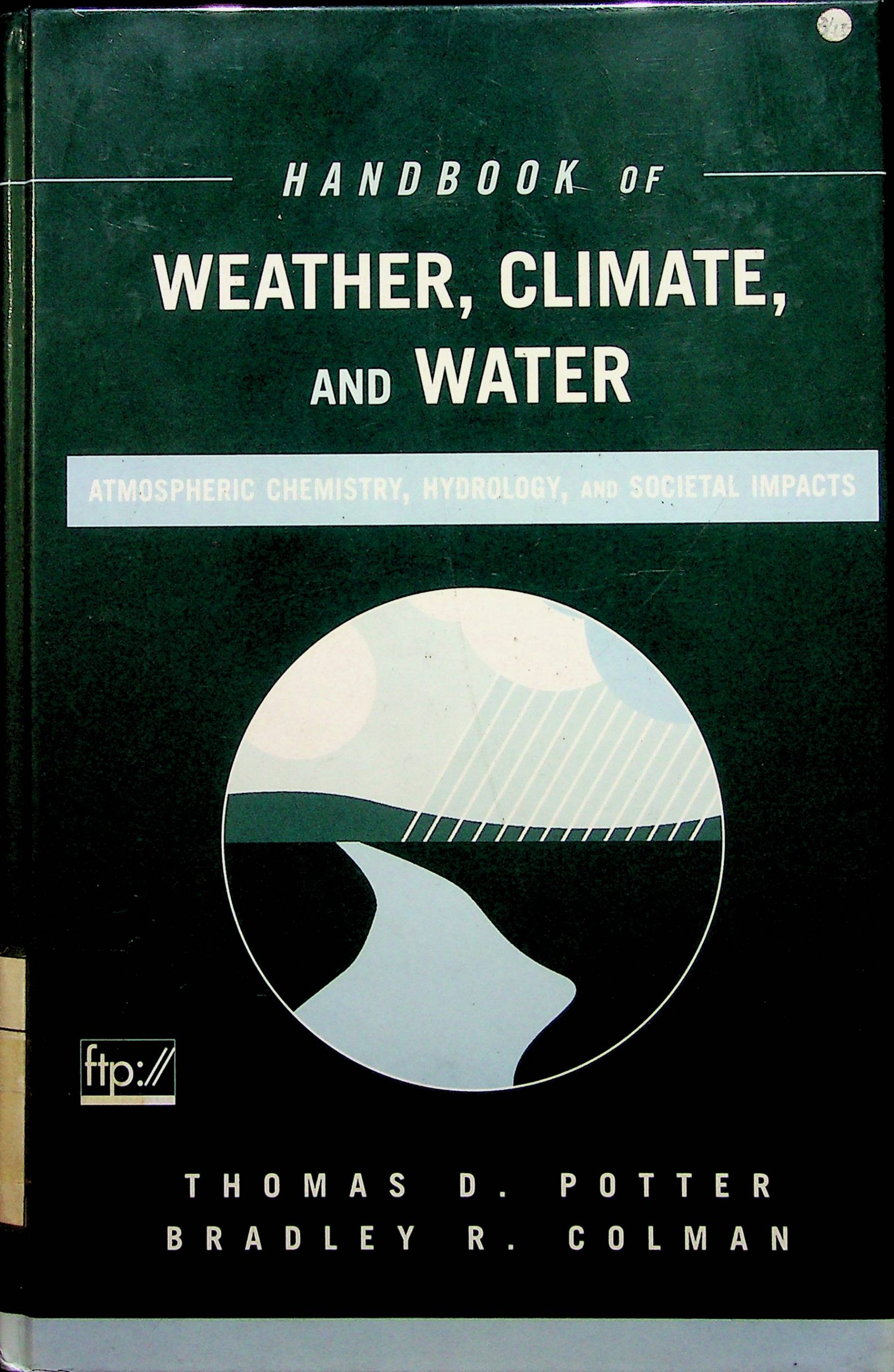The Handbook of Weather, Climate, and Water provides an authoritative report at thestart of the 21st Century on the state of scientific knowledge in these exciting andimportant earth sciences. Weather, climate, and water affect every person on earthevery day in some way. These effects range from disasters like killer storms andfloods, to large economic effects on energy or agriculture, to health effects such asasthma or heat stress, to daily weather changes that affect air travel, construction,fishing fleets, farmers, and mothers selecting the clothes their children will wear thatday, to countless other subjects.During the past two decades a series of environmental events involving weather,climate, and water around the globe have been highly publicized in the press: thOzone Hole, Acid Rain, Global Climate Change, El Ninos, major floods in Bangladesh,droughts in the Sahara, and severe storms such as hurricane Andrew in Floridaand the F5 tornado in Oklahoma. These events have generated much public interestand controversy regarding the appropriate public policies to deal with them. Suchdecisions depend critically upon scientific knowledge in the fields of weather,climate, and water. One of two major purposes of the Handbook is to provide an up-to-date accountingof the sciences that underlie these important societal issues, so that both citizensand decision makers can understand the scientific foundation critical to the processof making informed decisions. To achieve this goal, we commissioned overviewchapters on the eight major topics that comprise the Handbook: AtmosphericDynamics, Climate System, Physical Meteorology, Weather Systems, MeasurementsAtmospheric Chemistry, Hydrology, and Societal Impacts. These overview chapters present, in terms understandable to everyone, the basic scientific informationneeded to appreciate the majorenvironmental issues listed above.The second major purpose of the Handbook is to provide a comprehensivereference volume for scientists who are specialists in the atmospheric and hydrologiareas. In addition, scientists from closely related disciplines and others who wish toget an authoritative scientific accounting of these fields should find this work to be ofgreat value. The 95 professional-level chapters are the first comprehensive andintegrated survey of these sciences in over 50 years, the last being completed in1951 when the American Meteorological Society published the Compendium of Meteorology. The Handbook of Weather, Climate and Water is organized into two volumescontaining eight major sections that encompass the fundamentals and critical topicareas across the atmospheric and hydrologic sciences. This volume contains sectionson the highly important topics of Atmospheric Chemistry, Hydrology, and SocietalImpacts. The section on Atmospheric Chemistry contains thorough descriptions of the major biogeochemical cycles (carbon, oxygen, nitrogen and sulfur) that describehow chemical elements and compounds are transferred between the atmosphere, oceans, land and the biosphere, and their relationship to important environmental issues such as global climate change, the ozone hole, acid rain, and air pollution.The Hydrology section includes in-depth discussions of all parts of the hydrologic cycle (rain, snow, evaporation, runoff, ground water, and soil moisture), plus chapters on floods, remote sensing and GIS in hydrology, and stochastic processes in hydrology. Societal Impacts has chapters on the social effects of all of the majorenvironmental issues. To better protect against weather, climate, and water hazards, as well as topromote the positive benefits of utilizing more accurate information about thesenatural events, society needs improved predictions of them. To achieve this, scientistmust have a better understanding of the entire atmospheric and hydrologicsystem. Major advances have been made during the past 50 years to better understanthe complex sciences involved. These scientific advances, together with vastlyimproved technologies such as Doppler radar, new satellite capabilities, numericalmethods and computing, have resulted in greatly improved prediction capabilitiesover the past decade. Major storms are rarely missed nowadays because of thecapability of numerical weather-prediction models to more effectively use the datafrom satellites, radars and surface observations, and weather forecasters’ improvedunderstanding of threatening weather systems. Improvements in predictions areongoing. The public can now rely on the accuracy of forecasts out to about fivedays, when only a decade or so ago forecasts were accurate to only a day or two.Similarly, large advances have been made in understanding the climate systemduring the past 20 years. Climate forecasts out to a year are now made routinelyand users in many fields find economic advantages in these climate outlooks evenwith the current marginal accuracies, which no doubt will improve as advances in our understanding of the Climate System occur in future years.
5
HANDBOOK OF WEATHER, CLIMATE, AND WATER
THOMAS D. POTTER BRADLEY R. COLMAN
Penerbit :
John Wiley and Sons. Inc. Al! rights reserved.
Tahun :
2003
Buku Text
Klimatologi
-
No Scan117
-
No Klasifikasi551.6
-
ISBN-
-
ISSN-
-
No Registrasi31A/IV/2012
-
Lokasi Terbit-
-
Jumlah Hal62
-
Label551.6 Pot h
-
Versi DigitalYA
-
Versi FisikYA
-
Lokasi Rak Buku Fisik01/B/13
-
Jumlah Exemplar Fisik Tersedia1






